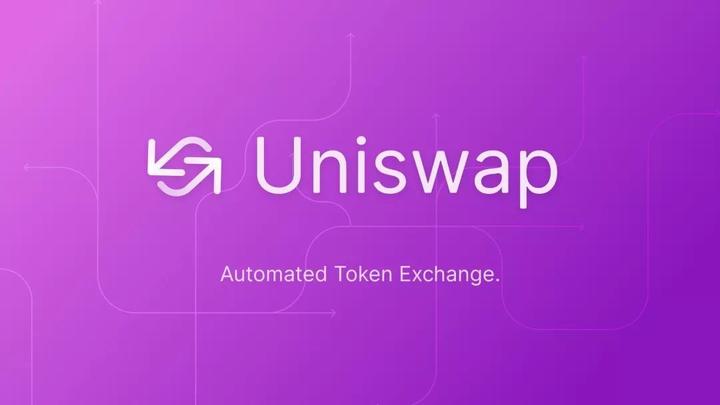The cryptocurrency market in 2025 resembles a silent battlefield. The competition among decentralized exchanges (DEXs) has evolved from pure technological rivalry into a comprehensive contest involving ecosystem strategies, compliance capabilities, and user experience. In this arena, the clash between the established leader Uniswap and the rising star XBIT stands out—Uniswap boasts deep roots in the Ethereum ecosystem, while XBIT has surged ahead by leveraging emerging blockchains like Solana and the meme coin frenzy. Who will prevail under the dual pressures of technological evolution and user demand? The answer may lie in their strategic differences.
1. Technical Architecture: The Battle of Speed vs. Stability
Uniswap’s "Stability" and Its Pain Points
As the dominant DEX in Ethereum’s ecosystem, Uniswap still commands massive trading volumes in 2025. Its core strengths lie in its mature liquidity pool architecture and developer ecosystem—over 60% of DeFi protocols default to Uniswap V4, and Layer 2 solutions like Arbitrum and Optimism have reduced derivative trading costs to just 4.2% of mainnet fees. However, Ethereum’s notorious high gas fees remain unresolved—a simple meme coin swap can still cost users $20 in transaction fees, driving retail traders toward cheaper alternatives.
XBIT’s "Speed" and Its Risks
XBIT takes a radically different approach. Built on Solana’s 300-millisecond block times and $0.0001 per transaction, its confirmation speed is 150x faster than Ethereum’s. More crucially, XBIT integrates quantum-resistant cold storage and biometric DID authentication, reducing private key leakage risks to just 0.02%—a critical advantage as quantum computing threats escalate in 2025. Yet, Solana’s history of network outages keeps some institutional players cautious.

2. Ecosystem Strategy: Meme Coins vs. Institutional Adoption
Uniswap’s "Defense of Legacy Markets"
Uniswap’s moat is its vast asset coverage, from tokenized real-world assets (RWA) to institutional-grade derivatives, with liquidity pools exceeding $80 billion. Its compliance efforts—such as becoming one of the first DEXs to support tokenized U.S. Treasuries—earned regulatory goodwill. But its Achilles’ heel? Meme coins. By 2024, memes accounted for 37% of DEX volume, yet Uniswap’s strict listing policies caused it to miss early waves of 100x gems like Dogwifhat and BOME.
XBIT’s "Aggressive Growth Play"
XBIT weaponized meme coins. Its AI-driven pre-screening system filters high-liquidity tokens, while real-time sentiment analysis tools keep user holding periods at just 3.2 days—far below industry averages. Its killer feature? Deflationary liquidity mining: every trade burns XBT tokens, while NFT staking unlocks airdrops, creating a self-reinforcing loop for traders and long-term holders. This fueled a 200% volume surge in Q1 2025, though critics warn of a bubble.
3. Regulatory Chess Game: Compliance vs. Anonymity
Uniswap’s "Compliance Burden"
As a U.S. regulatory target, Uniswalk walks a tightrope—complying with EU’s MiCA transparency rules while dodging CFTC scrutiny over derivatives. Its compromise? A tiered KYC system: anonymous trading for small users, but ID checks for whales. This retained institutions but pushed privacy advocates to anonymized chains.

XBIT’s "Regulatory Arbitrage"
XBIT exploits jurisdictional loopholes. Its Asia servers allow anonymous trading, while its EU version uses ZK-proofs to verify compliance without exposing user data. This "code-as-law" model won praise from the Trump administration and attracted BlackRock for on-chain asset allocation.
4. The Endgame: Three Trends Deciding 2025’s Winner
High-Frequency Trading (HFT) Dominance
XBIT’s sub-second cross-chain swaps already support BNB and ADA, while Uniswap’s Layer 3 remains in testing. If Uniswap can’t cut confirmation times below 5 seconds by year-end, quant firms may abandon it.Modular Blockchains Fragmenting Liquidity
With Polygon’s CDK and Cosmos’ Interchain Security dismantling single-chain monopolies, XBIT’s integration with Sui’s parallel processing gives it an NFT edge. Uniswap’s reliance on Ethereum’s EVM risks liquidity silos.SocialFi’s Make-or-Break Moment
XBIT’s "copy-trading via Twitter" converts social hype into on-chain liquidity. Uniswap’s SocialFi investments lack such seamless integration.
 The Ultimate Litmus Test
The Ultimate Litmus Test
The 2025 DEX war is a clash of philosophies: Uniswap embodies slow-and-steady DeFi purism, while XBIT champions high-speed disruption. Short-term, XBIT’s meme coin and cross-chain edge may prevail—but the long-term victor must balance speed vs. security, speculation vs. compliance, and decentralization vs. scalability. In this post-wild west era, the real winner won’t be a platform, but the ecosystem that best aligns code with human behavior.
















No comments yet